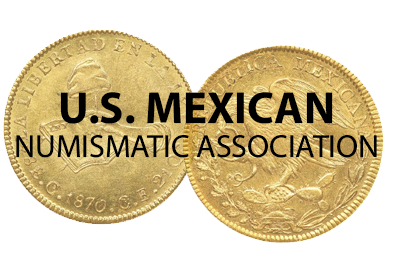Counterfeit Parral “Bolita” Silver 1 Peso (1913)
by Scott Doll
Introduction
This article will focus on the counterfeit for one of the scarcest and most sought-after crown sized coins from the Mexican Revolution, that coin being the famous Chihuahua “Bolita” as it is often referred to by the collecting community. Although I would say this coin is rare, it is not extremely rare as it does show up in the major auctions from time to time and will command a high premium for anyone who wants to try to buy one. With that said, the scarcity is what will make this coin a prime target for the counterfeiters since it could bring in a lot of money if sold to the unsuspecting or ill-informed collector. Not to sound so ominous about things, but the counterfeit presented here is not well made and not well designed and really should not fool anyone.

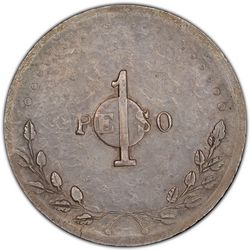
Genuine Parral Silver 1 Peso (1913)
Plain Edge, Approximately 33.00 g, and 38.00 mm
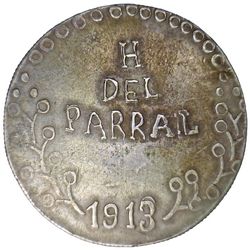
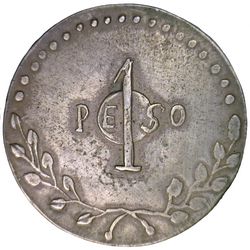
Counterfeit Parral Silver 1 Peso (1913
Plain Edge, 25.32 g, 37.98 mm
(XRF Analysis (+/- 2%) Ag 90.74, Cu 9.26
Coin Surface Differences
The first attribute I would like to highlight is a comparison of the coin surfaces. The genuine coin has a very uneven and leathery looking surface, while the counterfeit is relatively smooth throughout with some slight uneven areas.

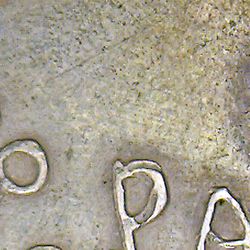
Genuine Counterfeit
Obverse Attributes Differences
Overall, the lettering on the genuine coin is much better designed than what is seen on the counterfeit where the letters are sloppy with inconsistent fonts and letter sizes, as well as disjointed lettering throughout which is most likely due to poor hand engraving.
“D” in “DEL”

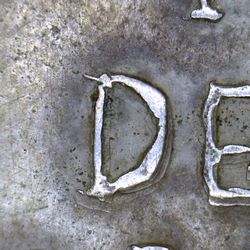
Genuine Counterfeit
One of the easiest identifiers between the genuine and the counterfeit is with the “D” of “DEL” which is repunched several times on the genuine coin. One solid repunch is easily seen on the left of the letter and a slight repunch can be seen on the right of the letter. These strong, multiple repunches are not seen on the counterfeit except for a slight one to the right of the “D”.
Date
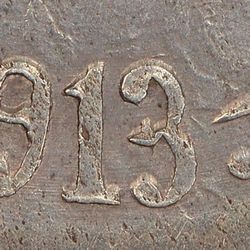
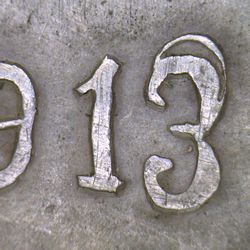
Genuine Counterfeit
The date has several easy comparisons. The “3” in the date on the counterfeit has a strong repunch or engraving error at the top, while the genuine coin does not. The font size on the date digits on the genuine coin are more consistent, while the counterfeit is inconsistent. Lastly, the middle bar within the “3” is thick on the genuine coin and thin on the counterfeit.
Date Period or “Dot”
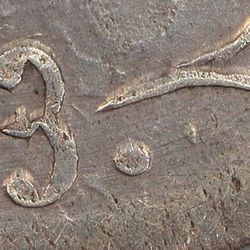

Genuine Counterfeit
The date on the genuine strike has a small period or “dot” to the right of the lower portion of the “3” while the counterfeit does not. Also, the plant stem on the right side of the coin points directly to the center of the “3” in the date on the genuine coin, while the stem faces towards the bottom of the “3” on the counterfeit.
Reverse Attributes Differences
The same comment applies to the lettering on the reverse as the genuine coin has better design quality with a more consistent font size and lettering while the counterfeit is sloppy and inconsistent.
"ES" of PESO
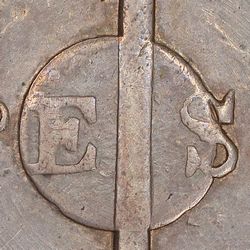
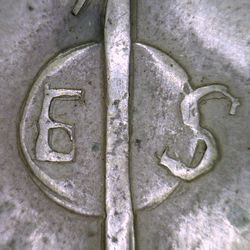
Genuine Counterfeit
The letters “ES” of PESO within the center circle shows that the letters on the genuine strike are bold and consistent and vertical while the counterfeit has thin letters and leans to the right. Since many Bolitas do not have these letters visible due to a soft strike, this attribute may not be easy to see.
Denomination Digit
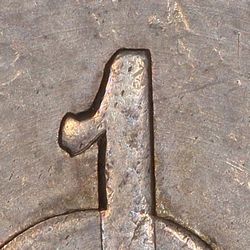
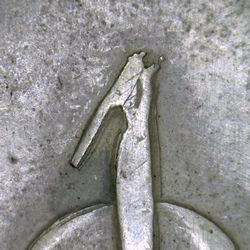
Genuine Counterfeit
The top of the “1” denomination is thick with a blunt point and shows a slight dip of the serif on a genuine coin while the counterfeit is thin and shows a sharp, thin line downward. There is also a small notch within the top serif on the underside, as well as the point at the very top that is not seen on the genuine strike.
Although there are several other attributes that help highlight the obverse and reverse differences between these two coins, the ones mentioned above should suffice as the key points to review when you come upon one of these coins. Overall, this is one of the easiest fakes to identify.
Summary
The modern counterfeit of a Chihuahua, Parral silver 1 peso or Bolita is not a well-designed nor is it well manufactured coin, therefore it should not really fool anyone if they simply take the time to closely look over the coin. At best, the counterfeit might simply be viewed as a collection hole filler for the rare Bolita coin which can be very pricey when available for sale thus making the genuine coin out of reach by many collectors.
Please send your comments, questions, or suggestions regarding this article, to me at
